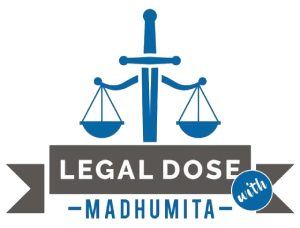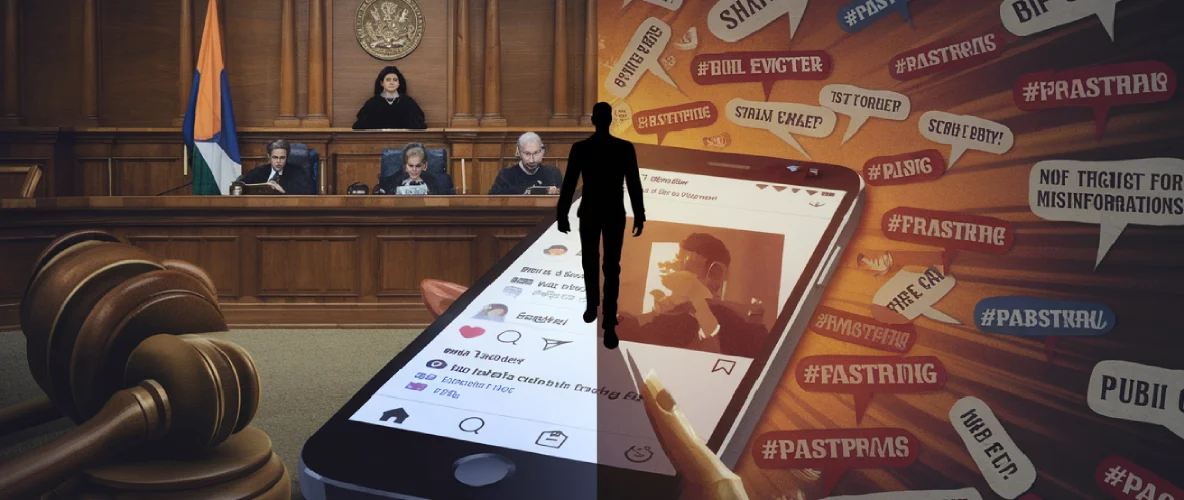The sudden tragic death of Bollywood actor Sushant Singh Rajput in June 2020 wasn’t just a personal tragedy. It became a national obsession that laid bare the troubling intersection of media sensationalism, public opinion, and the justice system in contemporary India.
On 14 June 2020 morning when news broke that the 34 year old actor had been found dead in his Mumbai apartment, few could have predicted how the narrative would unfold. What began as reports of a talented young man’s apparent suicide soon spiraled into something darker and more complex: a media circus that would challenge fundamental principles of justice and journalistic integrity.
When News Becomes Entertainment
I remember watching with growing unease as television channels transformed overnight. News anchors abandoned all pretense of objectivity, becoming judge, jury, and executioner. Breathless headlines screamed accusations. Graphic reenactments of the death scene played on loop. Conspiracy theories flourished in prime time.
“Tonight, we expose the truth behind Sushant’s death,” one prominent anchor would declare night after night, despite having no special access to the investigation. Another channel featured a bizarre reenactment of the actor’s final moments, complete with dramatic music and a lookalike actor.
What we witnessed wasn’t journalis. It was reality television masquerading as news, with real people’s lives as unwilling content. The ratings soared as ethics plummeted.
The Public Crucifixion of Rhea Chakraborty
Perhaps no one bore the brunt of this media frenzy more than Rhea Chakraborty, Sushant’s girlfriend. Before any court could evaluate evidence against her, she was vilified daily on national television. News channels branded her a “black magic practitioner,” “murderer,” and “gold digger.” Her private WhatsApp messages were broadcast nationwide. Her family was hounded by reporters and cameras.
One evening, I watched in horror as a news channel followed her from her home to the police station, broadcasting her movements live like a macabre sporting event. Reporters shoved microphones in her face, hurling accusations disguised as questions. “Did you murder Sushant?” they shouted, as if such a complex case could be resolved through an ambush interview on a Mumbai sidewalk.
When she was eventually arrested on drug-related charges, not murder or abetment to suicide many channels celebrated as though justice had been served. Few mentioned that these charges were relatively minor and unrelated to Sushant’s death itself.
A Fragmented Investigation
Meanwhile, the investigation itself became increasingly convoluted. What began under Mumbai Police jurisdiction soon involved multiple agencies: the Enforcement Directorate investigated financial angles, the Narcotics Control Bureau pursued drug connections, and the Central Bureau of Investigation took over the death investigation following a Supreme Court order.
Each development, each transfer of jurisdiction, each new angle became fodder for endless speculation. Experts with little knowledge of the specifics were paraded on television to offer dramatic pronouncements. Retired police officers, former judges, and celebrity lawyers weighed in with contradictory theories.
The public, understandably confused by this cacophony, latched onto whichever narrative confirmed their existing suspicions. Social media amplified these competing theories, creating echo chambers where nuance died and certainty flourished despite the absence of conclusive evidence.
The Judiciary’s Response and Case Closure
What’s often overlooked in discussions about this case is how the judiciary ultimately handled the matter with a deliberate, methodical approach that stood in stark contrast to the media frenzy.
In October 2020, the AIIMS medical board submitted its findings to the CBI, concluding that Sushant had died by suicide and not murder. This medical opinion largely corroborated the initial findings of the Mumbai Police. By January 2023, the CBI investigation had not found any evidence of foul play, effectively supporting the conclusion that the actor had taken his own life.
The courts, meanwhile, maintained their constitutional role as impartial arbiters. When the Bombay High Court granted bail to Rhea Chakraborty in October 2020, Justice Sarang V. Kotwal’s 73-page order systematically dismantled many of the sensationalist claims that had dominated media coverage. The court observed that Rhea was “not part of any drug syndicate” and that there was no evidence to suggest she had committed any offense involving commercial quantities of narcotics.
“Simply because Rhea was in a relationship with Sushant, and was managing his affairs for a short period, she cannot be labeled as a drug trafficker,” the court noted, adding that the prosecution had failed to establish fundamental elements required for the charges they had pursued.
In a particularly pointed observation, the court remarked on the nature of the investigation itself: “The investigation did not reveal any recovery either from the applicant or from the house of Sushant Singh Rajput.”
The CBI’s Findings and Public Perception
The CBI’s investigation, despite months of work, ultimately did not support the murder theory that had captivated much of the nation. Their findings, which aligned with the AIIMS report, pointed to suicide as the cause of death. However, by the time these conclusions emerged, public interest had already begun to wane the media circus had moved on to fresher controversies.
The problem with such high-profile investigations is that they begin under immense public scrutiny. Every lead, every angle must be pursued exhaustively, not just because the case demands it, but because millions of people are watching. This creates an illusion that there must be something more to find, even when the evidence points to a straightforward, if tragic, conclusion.
What’s particularly telling is how little coverage the case’s effective closure received compared to the frenzy that accompanied its early days. News channels that had dedicated hours of daily programming to speculative theories about Sushant’s death barely mentioned the CBI’s findings that contradicted their narratives.
“It was as if they had invested so heavily in a particular story murder, conspiracy, Bollywood mafia that they couldn’t acknowledge how the facts ultimately didn’t support it,” observed a media analyst. “The damage, however, had already been done to multiple reputations and lives.”
The Human Cost
Behind the sensational headlines were real people whose lives were forever altered. Sushant’s family grieved publicly while being pulled into the media vortex. Rhea’s career was effectively destroyed. Even peripheral figures friends who spoke to media only to find their words twisted, colleagues who expressed condolences only to be accused of hypocrisy suffered collateral damage.
Mental health professionals who attempted to discuss depression were drowned out by louder, more sensational voices suggesting foul play. The opportunity to have a meaningful national conversation about mental health in a country where suicide rates continue to climb was largely squandered.
Justice at What Cost?
The case raises profound questions about justice in high-profile matters:
When the court of public opinion renders its verdict months before a judge even receives evidence, what happens to the presumption of innocence? When investigative agencies feel immense public pressure to make arrests or pursue specific angles, can they maintain objectivity? When media organizations prioritize ratings over responsibility, who holds them accountable?
The Path Forward
If there’s any silver lining to this troubling saga, it’s that it has sparked conversations about media ethics and justice that were long overdue. Several journalists have publicly questioned their industry’s approach. Some viewers have become more discerning consumers of news. Legal experts have renewed calls for stricter guidelines on reporting ongoing investigations.
For meaningful change, however, we need more than conversations:
Media organizations must strengthen self-regulation and prioritize ethics over entertainment. Viewers must demand better by supporting responsible journalism and rejecting sensationalism. The justice system must develop stronger mechanisms to maintain integrity despite public pressure. And society at large must remember that behind every headline are human beings deserving of dignity.
Remembering the Person Behind the Case
In the chaos surrounding his death, the man himself Sushant Singh Rajput was often lost. Before he became a hashtag or a ratings driver, he was a multifaceted individual: an actor who brought depth to his performances, a science enthusiast who owned a telescope and loved discussing astrophysics, a philanthropist who quietly supported students and disaster relief efforts.
A former co-star described him as “intensely curious about everything film, science, philosophy. He always had a book in his hand between takes.” This complexity the full humanity of a life was flattened into a one-dimensional narrative that served others’ purposes.
Final Thoughts
As India grapples with the aftermath of this case, we stand at a crossroads. Will the next high profile death or crime trigger another media feeding frenzy? Or will we collectively demand a more measured, ethical approach that respects both justice and human dignity?
The true test will come with the next sensational case. Will news directors resist the temptation to boost ratings through speculation? Will viewers turn away from channels that prioritize sensation over substance? Will investigators maintain independence despite public pressure?
In a media landscape increasingly driven by clicks, views, and engagement, choosing ethical journalism may seem like swimming against a powerful current. But if the Sushant Singh Rajput case teaches us anything, it’s that the cost of failing to do so is paid in human lives and dignity.
As we move forward, perhaps the most fitting tribute to Sushant would be a commitment to do better to seek truth rather than sensation, to preserve the presumption of innocence, and to remember always that behind every headline is a human being deserving of dignity, even in death.


